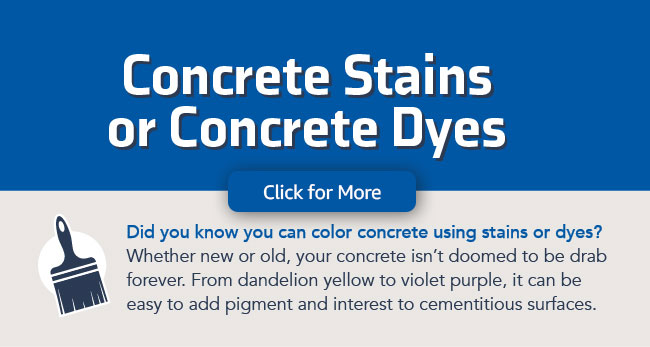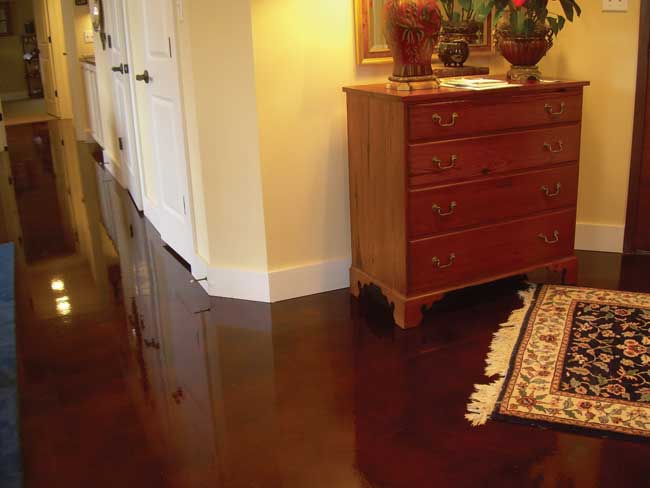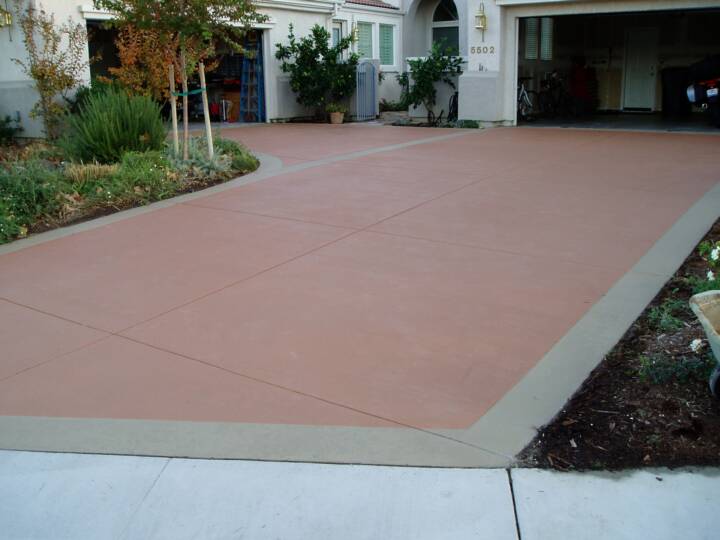Did you know you can color concrete using stains or dyes? That’s right: Whether your concrete is new or old, it isn’t doomed to be drab forever. From dandelion yellow to violet purple, it can be easy to add pigment and interest to cementitious surfaces.
There are definite pros and cons to using stains or dyes to color concrete. Understanding the different approaches (and which one is better for a given project) is important if you’re considering adding character to your own concrete structures.
DYES
Dyes are nonreactive which means, unlike stains, they don’t chemically react with the concrete. So, they are safer to use than stains. And because they have low or no volatile organic compounds (VOC), they are easier on the environment. Plus, they can be quick and simple to use for the DIY homeowner. You basically have two types of concrete dyes to choose from.
-
- Water-based Concrete Dyes typically create a variegated, or marbled, finish that is similar to the type achieved with stains.
- Solvent-based Concrete Dyes are mixed with a solvent, like alcohol or acetone, and create a monotone or opaque finished product.
Both water- and solvent-based dyes work by penetrating the concrete’s pores to change the color. A coat of sealer over the top of the dye ensures it stays looking good.
STAINS
Stains, on the other hand, typically contain hydrochloric acid, metallic salts and water, and react chemically with the calcium hydroxide in the concrete to permanently change the color. Unlike penetrating the pores of the concrete like dyes, stains actually etch the surface and create a mottled, variegated finish.
And that’s the real difference: Stains are permanent. Dyes? less so.
STAINS OR DYES?
So, which one is right for your project? It really depends on your preference, style and long-range goal for the surface. It’s worth noting that dyes aren’t UV-stable, meaning they will fade or discolor in the sun. So, they aren’t the best option for outdoor spaces. However, because dyes don’t permanently alter the concrete as stains do, it’s possible to change the appearance years later. If you get tired of pigment, it’s possible to re-color the concrete with dyes.
No matter what coloring option is right for you, Intermountain Concrete Specialties has you covered. From stains to dyes to sealers, we have the products and expertise you need to successfully complete any home project. Come and talk to one of our experts at any of our seven locations, from St. George to Idaho Falls, for all your concrete project questions.


